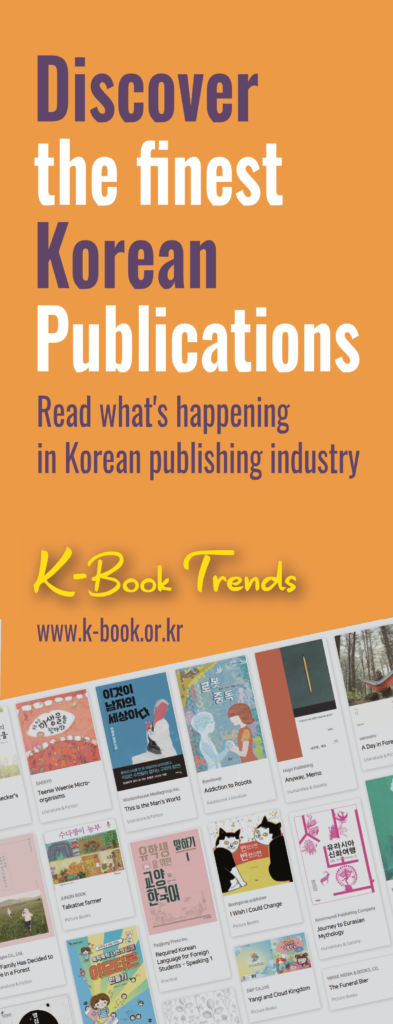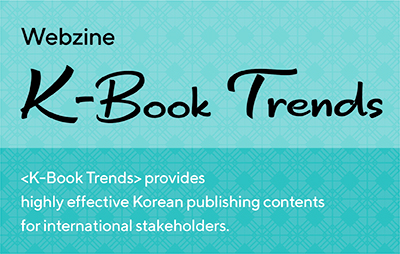
Outline
The Publication Industry Promotion Agency of Korea (KPIPA) conducted the 2018 Publication Industry Factual Survey under article 16.5 “Factual Surveying and Statistical Surveying of the Publication and Culture Industry.” The survey conducted from June to December 2018 for the period between January 1st to December 31st, 2017, includes Copyright Export Statistics Survey.
The 2018 Publication Industry Factual Survey used a structured survey format (questionnaire) to research areas such as basic business information, general status, organization status, distribution status, business index and prospects, and other comments, where the researchers collected relevant information via phone calls, fax, e-mail, and offline surveys.
The Publication Industry Promotion Agency of Korea (KPIPA) said that the objective is to identify the current status of businesses engaging in publishing, estimate their business scale, develop and evaluate various policies related to the publication industry, thereby providing basic data to support the planning and evaluation of policies related to the industry, establishment of companies’ management plan, and facilitation of academic research of the academia and research institutes.
Summary of Factual Survey Result
Publisher
| Primary Classification |
Secondary Classification |
Findings | |
| General Status |
Form of Business |
|
|
| Form of Company |
|
||
| Primary Field of Publication |
|
||
| Employee Status |
|
||
| New Book Publication |
|
||
| Transaction and Distribution Status |
|
||
| Welfare Status |
|
||
| Sales | Sales |
|
|
| Expenses |
|
||
| Sales Percentage |
|
||
| Environment and System |
Social Responsibility |
|
|
| Publication Standard Contract |
|
||
| Aspects in Need of Improvement |
|
||
| Intention to Participate in Joint Project |
|
||
e-book Publisher
| Primary Classification |
Secondary Classification |
Findings | |
| General Status |
Form of Business |
|
|
| Form of Company |
|
||
| Range of Business (multiple choices allowed) |
|
||
| Primary Field of Publication |
|
||
| Employee Status |
|
||
| Number of Active Writers |
|
||
| Number of Business Partners |
|
||
| Business Status |
Sales and Sales Percentage |
|
|
| * | B2C: Online Bookstore 44.1%, e-book Website 36.4%, Master Contents Provider (MCP) 4.0%, Mobile Service/Portal Website 3.0%, Company Website 2.7%, Global Platform 2.3%, Others 1.2% | ||
| Sales of Web Novels and Mobile Apps |
|
||
| Books Handled & Transaction Status |
New and Cumulative Production |
|
|
| Production Ratio |
|
||
| e-book and Paper Book |
|
||
Wholesale/Exclusive Distribution
| Primary Classification |
Secondary Classification |
Findings | |
| General Status |
Form of Company |
|
|
| Combination of Wholesale and Retail |
|
||
| Warehouse |
|
||
| Primary Field |
|
||
| Employee Status |
|
||
| Business Environment |
Sales Percentage |
|
|
| Operating Profit & Net Profit |
|
||
| Expenses |
|
||
| Books Handled & Transaction Status |
Ratio of Books Handled |
|
|
| Number of Business Partners |
|
||
| Trade Condition |
|
||
Offline Bookstore
| Primary Classification |
Secondary Classification |
Findings | |
| General Status |
Type of Bookstore |
|
|
| Form of Company |
|
||
| Business Location |
|
||
| Store Area |
|
||
| Employee Status |
|
||
| Business Status |
Sales Percentage |
|
|
| Business Profit and Net Profit |
|
||
| Expenses |
|
||
| Books Handled & Transaction Status |
Books Handled |
|
|
| New BookTypes and Number of Copies |
|
||
| Monthly Average Orders and Returns |
|
||
| Customer Status |
Visitors and Purchase Ratio |
|
|
| Customer Groups |
|
||
| Number of Books Purchased and Purchase Amount |
|
||
| Transaction and Informatization |
Number of Business Partners |
|
|
| Purchase Ratio |
|
||
| Return Ratio and Return Period |
|
||
Online Bookstore
| Primary Classification |
Secondary Classification |
Findings | |
| General Status |
Type of Bookstore |
|
|
| Form of Company |
|
||
| Warehouse Status |
|
||
| Offline Store Operation Status |
|
||
| e-book Sales |
|
||
| Used Book Transactions |
|
||
| Employee Status |
|
||
| Business Status |
Sales Percentage |
|
|
| Operation Profit & Net Profit |
|
||
| Expenses |
|
||
| Books Handled & Transaction Status |
Books Handled |
|
|
| New Book Types and Number of Copies |
|
||
| Customer Status |
Visitors and Purchase Ratio |
|
|
| Customer Groups |
|
||
| Number of Books Purchased and Purchase Amount |
|
||
| Transaction and Informatization |
Number of Business Partners |
|
|
| Purchase Ratio |
|
||
| Return Ratio and Return Period |
|
||
e-book Distributors
| Primary Classification |
Secondary Classification |
Findings | |
| General Status |
Primary Field of Distribution |
|
|
| Employee Status |
|
||
| Number of Business Partners |
|
||
| Business Status |
Sales Percentage |
|
|
| Web Novels and Mobile App Sales |
|
||
| Books Handled & Transaction Status |
Number of Services |
|
|
| Production Ratio per Type |
|
||
| Sales Status |
|
||
| Customer Status |
Membership Status |
|
|














